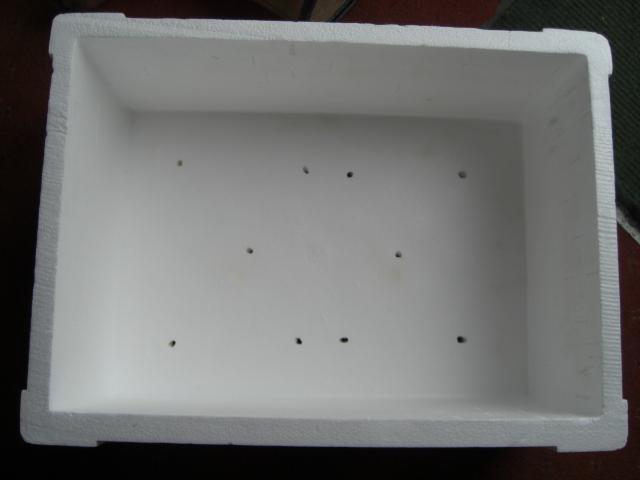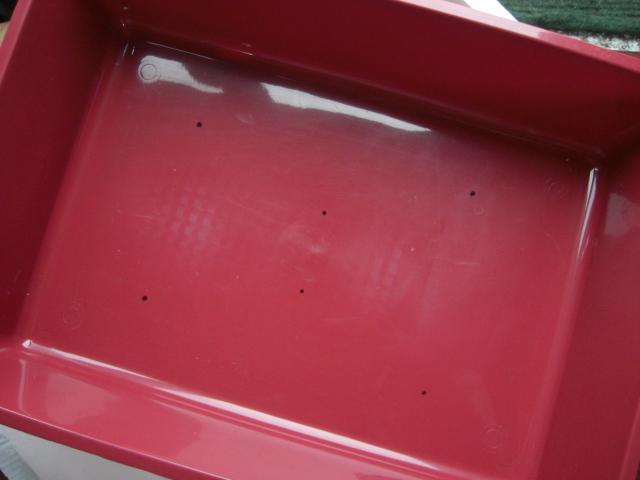How many vent holes are in a typical styro bator? And where are they?
Here's the situation: I started incubating duck eggs just over three weeks ago and after a few days my usually reliable bator's temperature started going wonky and cooked all but 8 of my duckies. I quickly scrabbled together some cash and bought a secondhand homemade still air styro box. I'm about to go into lockdown (tomorrow) and I'm thinking about oxygen flow, as the only holes in this bator are in the lid. Up till now I wasn't too worried as I've been opening it three or four times a day to hand turn the eggs. But now it's going to be kept shut until they hatch, I'm getting rather concerned.
I don't want to just go making holes in it without finding out a bit more, so any and all advice would be very welcome. I'm mostly interested in where the holes are on a decent styro box like the Hovabators, and also what size they are. Also interested in what's the best way to make tidy holes in styrofoam. A hot skewer?
Here's my styro box. The temperature is controlled by a knob on the lid.

Here's the lid. With the lights on inside, you can see the air holes lit up. They're the only holes in the whole bator:

Here's the underside of the lid with its twin halogen bulbs. The lid just rests on top of the box btw, it's not firmly sealed down or anything:

And here's the inside of the bator, complete with eggs and water wiggler:

There's a large rectangular plastic tray in the bottom of the bator, but I could easily remove it and lay the eggs on the floor. Or keep them in the little grey plastic tray they're sitting in just now. Humidity is going to be jars of water, with rags in them to increase the surface area if necessary. It's been running dry for the past two weeks as the humidity was too high with added water. I got the bator set up exactly the way it is now and I didn't change a thing as the woman I bought it from said she'd used it successfully as a hatcher.
But I'd really like some opinions and advice on the air hole situation.
Thanks in advance!
Here's the situation: I started incubating duck eggs just over three weeks ago and after a few days my usually reliable bator's temperature started going wonky and cooked all but 8 of my duckies. I quickly scrabbled together some cash and bought a secondhand homemade still air styro box. I'm about to go into lockdown (tomorrow) and I'm thinking about oxygen flow, as the only holes in this bator are in the lid. Up till now I wasn't too worried as I've been opening it three or four times a day to hand turn the eggs. But now it's going to be kept shut until they hatch, I'm getting rather concerned.
I don't want to just go making holes in it without finding out a bit more, so any and all advice would be very welcome. I'm mostly interested in where the holes are on a decent styro box like the Hovabators, and also what size they are. Also interested in what's the best way to make tidy holes in styrofoam. A hot skewer?
Here's my styro box. The temperature is controlled by a knob on the lid.
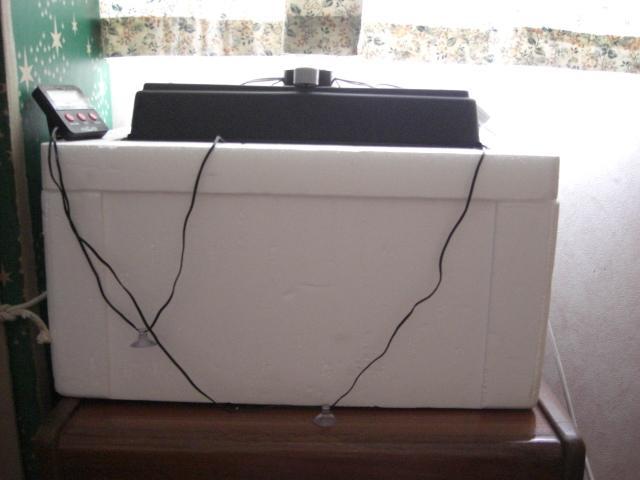
Here's the lid. With the lights on inside, you can see the air holes lit up. They're the only holes in the whole bator:
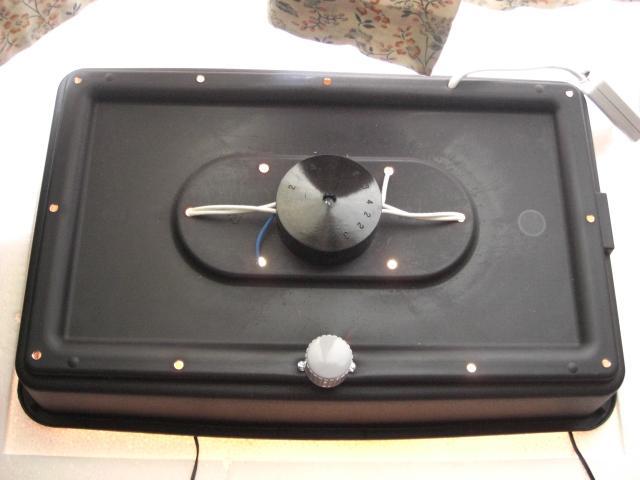
Here's the underside of the lid with its twin halogen bulbs. The lid just rests on top of the box btw, it's not firmly sealed down or anything:
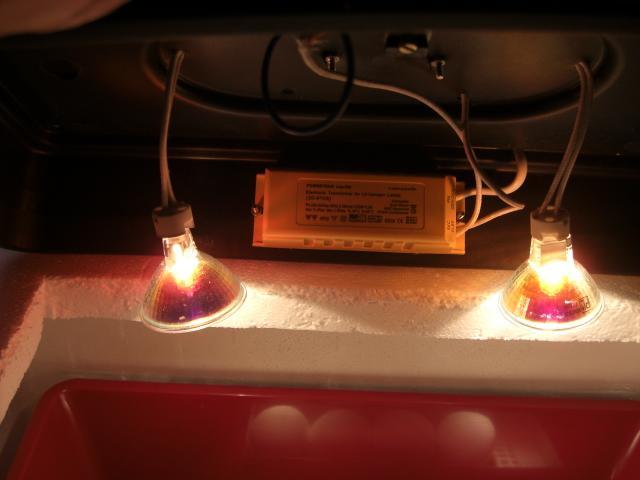
And here's the inside of the bator, complete with eggs and water wiggler:
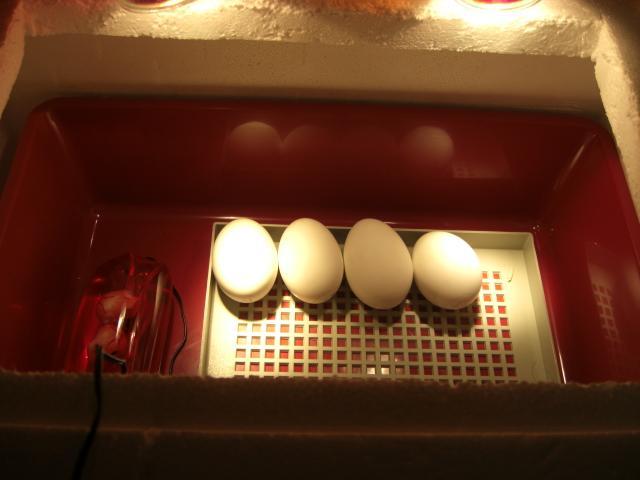
There's a large rectangular plastic tray in the bottom of the bator, but I could easily remove it and lay the eggs on the floor. Or keep them in the little grey plastic tray they're sitting in just now. Humidity is going to be jars of water, with rags in them to increase the surface area if necessary. It's been running dry for the past two weeks as the humidity was too high with added water. I got the bator set up exactly the way it is now and I didn't change a thing as the woman I bought it from said she'd used it successfully as a hatcher.
But I'd really like some opinions and advice on the air hole situation.
Thanks in advance!
Last edited:

